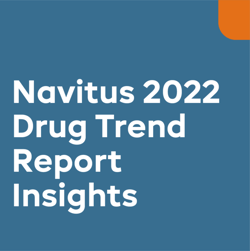Navitus’ CEO, David Fields, shares his insights into the pharmacy benefits industry that will help plan sponsors achieve greater cost savings, clinical care and peace of mind in 2022.

Quality and affordable health care has never been more top of mind as we prepare for the third year of the COVID-19 pandemic. In an environment where health care challenges continually evolve, plan sponsors are looking to regain control of their drug spend.
The effects of the pandemic evolved the needs of plan sponsors and their members. In 2022, plan sponsors will put their pharmacy benefits plan once again under the microscope to maximize its performance in an uncertain health care landscape. As President and CEO of Navitus Health Solutions, a full pass-through transparent pharmacy benefit manager (PBM), I’m aware of the unique challenges plan sponsors face as they battle budget pressures and ambiguity over their spend. As we take on yet another unpredictable year, here are my top three forecasts to consider for plan sponsors looking to take the unnecessary costs out of their pharmacy benefits:
#1 MORE PLAN SPONSORS WILL PARTNER WITH ALTERNATIVE PBMS
The traditional spread pricing model is obsolete. Plan sponsors continually seek greater transparency from their PBM partner, with a growing number realizing some rebates actually drive their overall costs up. Instead, more and more plan sponsors are considering pass-through PBM models, where 100% of rebates and discounts received are passed back to them. This pricing model allows for an overall lower net-cost because the plan sponsor is billed the same amount the pharmacy is paid.
#2 PREVENTING FRAUD, WASTE AND ABUSE WILL DEMAND EXTRA ATTENTION
Before the pandemic, pharmacy benefit fraud, waste and abuse (FWA) was one of health care’s most significant challenges, diverting tens of billions of dollars away from patient care. Now, there are even more paths for committing FWA because of policy and regulation changes made during the pandemic. For example, unscrupulous providers can conduct fake virtual medical visits so they can bill for expensive equipment or testing. Plan sponsors looking to lower unnecessary costs and effectively manage fraudulent, wasteful and abusive behavior will place a greater emphasis on partnering with a vigilant PBM partner that is committed to protecting their clients’ assets.
#3 MANAGING SPECIALTY DRUG COSTS WILL BE A TOP PRIORITY FOR REDUCING COSTS
Over the next ten years, PBMs and specialty pharmacies will save payers and patients an estimated total of $250 billion on the cost of specialty medications and related non-drug medical costs. This projection is significant because specialty drugs already make up nearly half of pharmacy spend, indicating that these high-cost drugs are driving overall drug cost growth. Plan sponsors will rely on their PBM partner to help them navigate the rising costs of specialty drugs and improve their bottom line.
LOOKING TO THE FUTURE
Plan sponsors can work more closely with their PBMs to leverage management tools, including benefit designs and alternative funding for costs savings related to their medical or pharmacy benefit, to improve the quality and continuity of care while also reducing overall costs.
Plan sponsors’ investment in PBM partners is crucial to achieving cost savings, superior clinical care and peace of mind. To move confidently into the year ahead, plan sponsors can maximize their pharmacy benefit plan performance to regain control of their drug spend and get the results they are looking for.




